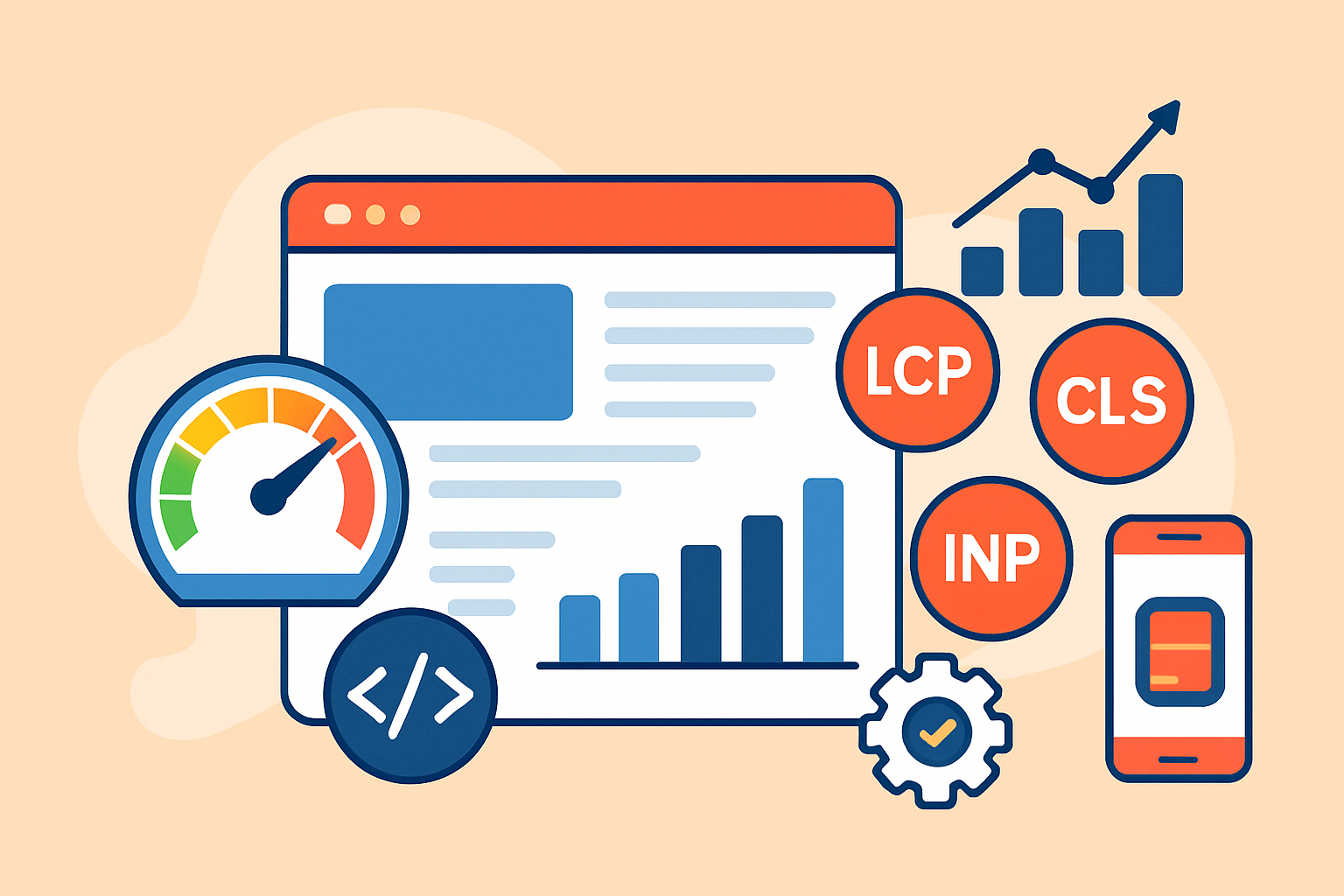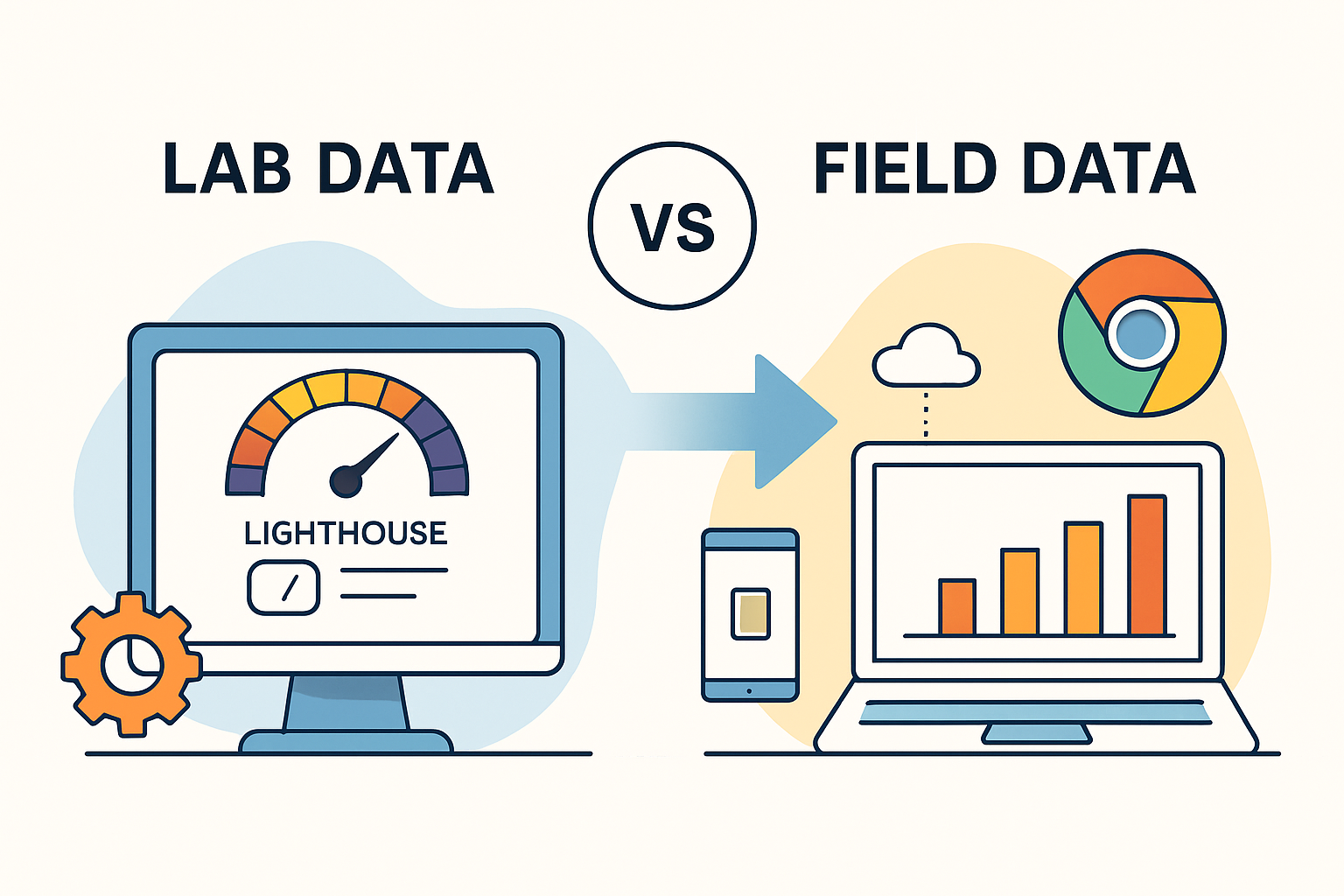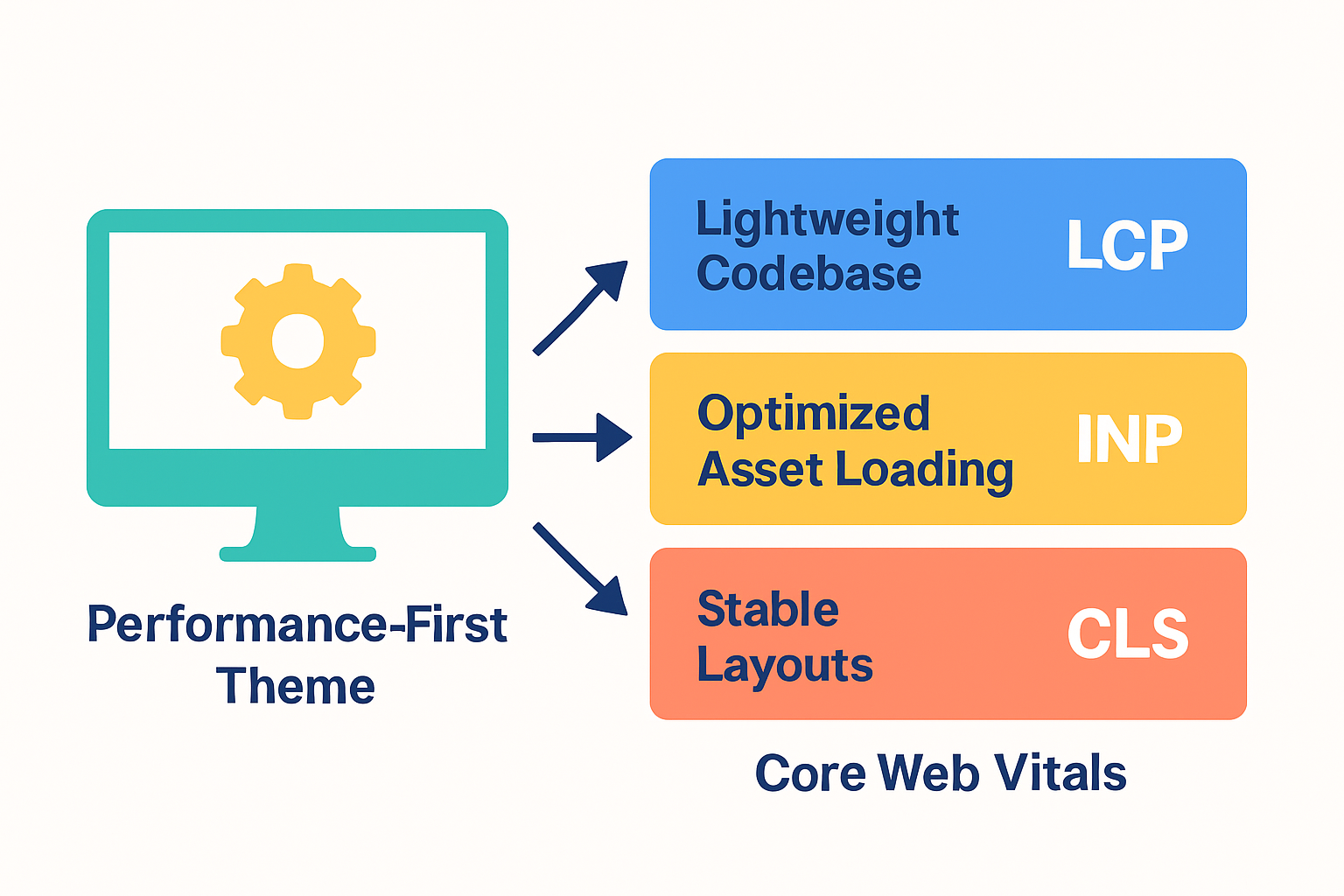How Do Performance-First Themes Optimize Core Web Vitals?

Senior WebCoder

Google’s Core Web Vitals are critical metrics that reflect how real users experience your website — especially in terms of speed, responsiveness, and visual stability. A performance-first WordPress theme can make a huge impact on these metrics, both in lab tests and field data.
Lab Data vs Real-World Data
When evaluating Core Web Vitals, it’s important to understand the difference between lab data and field data:

Lab Data
- Collected using tools like Lighthouse, PageSpeed Insights, or WebPageTest
- Simulated performance under controlled conditions
- Useful for debugging and testing performance during development
Field Data
- Real-user data collected via the Chrome User Experience Report (CrUX)
- Reflects how your site performs in the wild across different devices, networks, and regions
- Used by Google for ranking
Core Web Vitals in Google Search are based on field data, not lab tests.
Key Core Web Vitals Metrics

1. Largest Contentful Paint (LCP)
- What it measures: Load speed of the largest visible element (e.g., hero image, headline)
- Good score: ≤ 2.5 seconds
2. Cumulative Layout Shift (CLS)
- What it measures: Visual stability (does the page "jump" as it loads?)
- Good score: ≤ 0.1
3. Interaction to Next Paint (INP) (Replaced FID)
- What it measures: Responsiveness; how quickly the page reacts to user interaction
- Good score: ≤ 200 milliseconds
Supporting Metrics from Lab Tools
1. First Contentful Paint (FCP)
- What it measures: Time until the first piece of content appears
- Good score: ≤ 1.8 seconds
2. Total Blocking Time (TBT)
- What it measures: Time the main thread is blocked and can't respond to input
- Good proxy for: INP in lab tests
- Good score: ≤ 200 ms
How Performance-First Themes Help

1. Lightweight Codebase
Themes like GeneratePress, Blocksy, and Neve are modular and avoid unnecessary scripts — improving LCP, INP, and TBT.
2. Optimized Asset Loading
Performance themes:
- Load only required CSS/JS per page
- Use async and defer for scripts
- Reduce render-blocking resources
3. Stable Layouts
To reduce CLS, performance themes:
- Set image dimensions
- Avoid late-injected content
- Keep ad slots and embeds stable
4. Mobile-First Design
Since Core Web Vitals weigh mobile UX heavily, good themes:
- Prioritize mobile layout
- Use touch-friendly components
- Keep interactivity responsive for better INP
Metrics & Optimization Focus
| Metric | Good Score | Improved By |
|---|---|---|
| LCP | ≤ 2.5s | Fast hosting, image compression, theme optimization |
| CLS | ≤ 0.1 | Layout predictability, predefined dimensions |
| INP | ≤ 200ms | Lightweight JS, fewer event handlers |
| FCP | ≤ 1.8s | Minimal blocking resources |
| TBT | ≤ 200ms | Optimized JS execution |
Conclusion
A performance-first WordPress theme gives your site the best chance of scoring well on Core Web Vitals — but the real magic happens when you:
- Pair it with smart optimizations
- Continuously test and improve
- Monitor real user experiences
This leads to not just better SEO, but also higher engagement, lower bounce rates, and ultimately, better business outcomes.
